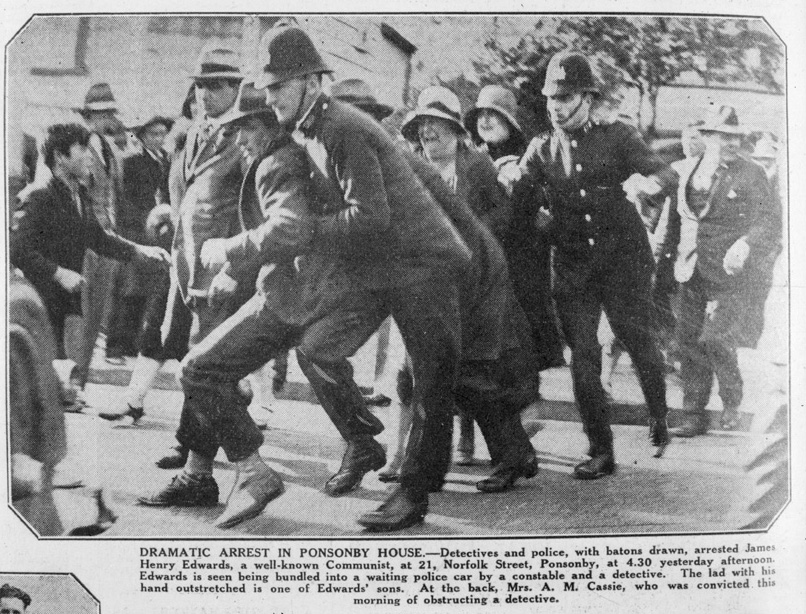This article was first published in Socialist Review 79, May-June 2021
The Tiwai Point Smelter, located at the very south of Aotearoa’s South Island, is an operation jointly owned by Rio Tinto and Sumitomo, two massive multinational corporations to which the profits flow. Alumina is imported from Australia and refined into aluminium. Around 90 percent of the final product ends up exported.
There is always a darker side to the story of multinational corporate mineral operations: there is evidence that toxic waste produced during the smelting process was buried near the factory and likely has been for decades. What will be the long-term effects of this waste on the surrounding agriculture? What poisons could be leeching into the milk and meat produced there? As a country that relies heavily on primary industries to employ people and to generate wealth, are we doing enough to safeguard our long-term survival, or is our government still chasing short-term gains just to show a line on a graph go up a little, while the resulting profit falls in the hands of big business?
Rio Tinto threatened to close the plant due to high power prices, but Meridian Energy, a company in which the government holds a majority stake, offered a new deal that will keep the operation alive until 2024. This could be great for the workers there, who have more time to transition into other work, though alternative work could be difficult to find with only their specialised industry training. To find similar work, the workers will have to relocate to wherever such employment can be found. The owners of Tiwai Point Smelter must prioritise re-training and redeployment of its workforce if they truly care about their workers.
Not that our agricultural industry is that clean to begin with: New Zealand has high levels of nitrates in many of our waterways. Levels in half of Canterbury water tables are in excess of what is deemed to be safe (3.87mg/1000ml), with some reaching as high as 6mg/1000ml. Nitrate contamination is caused by overuse of fertilisers and overworking the land with more animals than it can naturally support.
New Zealand has a facade of being clean and green, but when the rubber hits the road we are just as dirty as the any other industrialised nation – a sad reality of capital’s insatiable greed taking hold. We claim to be a country of clean air and crystal waters, and that might appear to be true in tourist traps like Queenstown, but the reality is far from what Tourism New Zealand markets.
It takes an inordinate amount of electricity to power Tiwai Point: 570 MW from the national grid to be exact – a whopping 13 percent of New Zealand’s power demand. This power is supplied via a dedicated hydroelectric plant in Manapouri, Fiordland. When the electricity price gets too high, the smelter owners simply whine to the government to give them a better deal, and like magic they make it happen. If only this generosity applied to our poorest people instead of billion-dollar overseas investors.
Where would this huge amount of power be re-routed if we didn’t have a huge, dirty, polluting factory to supply? It is likely it would feed into the national grid, which would reduce reliance on fossil fuel generation and reduce prices. However, we have seen the sorts of actions capital takes to maximise profits. Last year, the Electricity Authority found that Meridian Energy dumped water to artificially hike power prices.
So should we keep Tiwai Point? It’s a polluting, power-sucking nightmare that exists to supply big capital with the resources it needs to continue its endless quest to expand. Ninety percent of its output is sent overseas, mainly to Japan. The profits are not shared fairly among the workers who labour in heat and risk injury, but instead slip over our borders to line the pockets of businessmen who care only about graphs and numbers and couldn’t care less about toxic pollution.
The prominent arguments around Tiwai Point are focused on keeping employment in the southern South Island and the struggles Invercargill and its surroundings will face if the factory closes. There is little talk about the nature of the work being done and its long-term impact. What is the point of employing hundreds of people and stimulating growth if that work will leave the land and its people poisoned and bare? What happens to the workers and their families when the factory does shut? Will Rio Tinto and Sumitomo provide time and money to retrain the workforce in thanks for the years of service and millions in profits workers contributed? Or will they wash their hands of us?
There is also the possibility of re-tooling the existing factory to satisfy local demands for high-quality aluminium products and keeping some of the workforce. Already we could theoretically reduce production at the factory by 90 percent and not affect aluminium supply in New Zealand. This course of action would leave capacity for growth and would slash the level of pollution immediately.
Solutions in a capitalist economy can only end in job losses and destruction of the environment as businesses cut production, take cost-cutting measures and let toxic waste be buried. What we need is a radical change in the way we organise economically. ‘People not profit’ should be the catch-cry to our heavy industry – indeed all industries – for building a better world.








